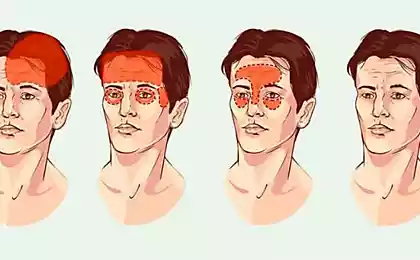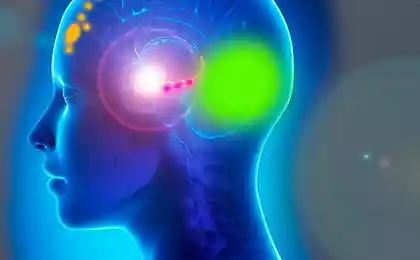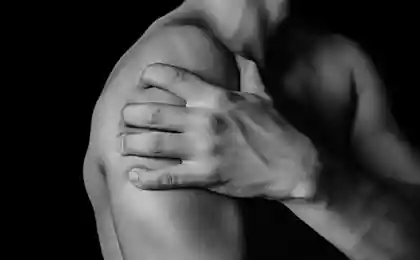493
Depression and pain will be removed meditation
Method of treatment of pain using mindfulness meditation-based understanding of the fact that the pain is of two types – primary and secondary. Primary pain occurs when illness, trauma, injury to the body or nervous system, and the secondary pain is the reaction of consciousness in the primary.

Secondary pain is as real, as primary, more often it is even more painful for the person. This is because the mind, as it "brings" it increases to get a better look, to understand and find a solution to the problem that caused the pain primary. But when the disease lasts a long time and consciousness has accumulated a lot of information about the disease and continues to focus on pain, it falls into a vicious circle where the already unproductive and constantly listens to the pain of a real, living memories of pain already experienced, worry that the pain will return. So pain turns into suffering. Man becomes worse and worse, physical pain adds anxiety, and then depression, constant voltage under the influence of pain suppresses the immune system, the disease is aggravated. The good news is that the person doesn't have to suffer in pain. To learn this, a person can, by practicing conscious meditation.
How does it happen? The technique of mindful meditation based on ancient practices of meditation, known in the East for thousands of years. In meditation there is nothing mystical and supernatural, and conscious meditation even suggests the occurrence of person in a special state of consciousness in trance, in dream. On the contrary, human consciousness during the meditation is very clear, the person is in full awareness of what was happening to him, he is alert and attentive. Concentrating on breathing simple breathing exercise in a comfortable position, feeling every inhale and exhale, one learns to see the body and mind in action, he observes the occurrence of pain, watching them check their consciousness, observes the emergence of thoughts about those sensations and acquires the ability not to fight with your feelings, and follow them by the attentive glance of his clear consciousness. And then there is, may seem surprising, but in fact, a natural phenomenon – the pain goes away. That is, when a person removes their consciousness from the epicenter of the pain, the pain ceases to be suffering and becomes one of sensations, which can be adjusted.
Hundreds of scientific papers by independent researchers has shown the effectiveness of mindfulness meditation in reducing pain, in the fight with depression at various psychosomatic diseases and in the treatment of cancer patients. Clinical studies leave no doubt improved the morale of the chronically ill through the practice of meditation mindfulness. You can list the main conclusions of these studies.
The average reduction of pain with mindfulness meditation – 57%, and for experienced practitioners it comes to 93%.
There is an increase in the quality of life in people whose diseases are accompanied by chronic pain. Patients regularly practicing meditation mindfulness, argue that in their life the pain was not take so much space as before and they had much more energy to practice their favorite things.
Mindfulness improves memory, enhances attention and creativity, and increases the level of endurance.
People who regularly meditate, less prone to emotional exhaustion and largely feel life satisfaction.
Conscious meditation stimulates the immune system, reducing the risk of diseases in healthy people and improving the pharmacological treatment of patients.
Meditation improves the activity of the cardiovascular system, lowering blood pressure.
Practice mindfulness at least as effective in reducing pain, and drugs.
The last statement I would like to clarify. It is not only on reducing pain intensity, although with regular practice of conscious meditation is observed in 40-70% reduction in the intensity of pain, we are talking about discomfort associated with the pain. This is due to the fact that meditation affects not one area of the brain, which directly receives information from the body, interpreted by the mind as pain, meditation affects multiple parts of the brain involved also in processing this information. Such impacts can also reduce discomfort from pain in more than 90%.
A significant reduction in discomfort creates space for the application of meditation in the treatment of patients with chronic pain who, because of their duration create extreme discomfort for patients. Suffering from constant pain is exhausting and may lead to violation of mental health. Such help to replace the medication just not. Meditation can do things it can not give the human pharmacology is to change your relationship with pain, remove the pain from the center of the human world and thus to return to the human world, hidden from his physical suffering.published
Author: Yulia Ustinova
P. S. And remember, only by changing their consumption — together we change the world! ©
Source: www.ustinova.info/meditatsiya-pri-bolevyh-simptomah-i-depressii/

Secondary pain is as real, as primary, more often it is even more painful for the person. This is because the mind, as it "brings" it increases to get a better look, to understand and find a solution to the problem that caused the pain primary. But when the disease lasts a long time and consciousness has accumulated a lot of information about the disease and continues to focus on pain, it falls into a vicious circle where the already unproductive and constantly listens to the pain of a real, living memories of pain already experienced, worry that the pain will return. So pain turns into suffering. Man becomes worse and worse, physical pain adds anxiety, and then depression, constant voltage under the influence of pain suppresses the immune system, the disease is aggravated. The good news is that the person doesn't have to suffer in pain. To learn this, a person can, by practicing conscious meditation.
How does it happen? The technique of mindful meditation based on ancient practices of meditation, known in the East for thousands of years. In meditation there is nothing mystical and supernatural, and conscious meditation even suggests the occurrence of person in a special state of consciousness in trance, in dream. On the contrary, human consciousness during the meditation is very clear, the person is in full awareness of what was happening to him, he is alert and attentive. Concentrating on breathing simple breathing exercise in a comfortable position, feeling every inhale and exhale, one learns to see the body and mind in action, he observes the occurrence of pain, watching them check their consciousness, observes the emergence of thoughts about those sensations and acquires the ability not to fight with your feelings, and follow them by the attentive glance of his clear consciousness. And then there is, may seem surprising, but in fact, a natural phenomenon – the pain goes away. That is, when a person removes their consciousness from the epicenter of the pain, the pain ceases to be suffering and becomes one of sensations, which can be adjusted.
Hundreds of scientific papers by independent researchers has shown the effectiveness of mindfulness meditation in reducing pain, in the fight with depression at various psychosomatic diseases and in the treatment of cancer patients. Clinical studies leave no doubt improved the morale of the chronically ill through the practice of meditation mindfulness. You can list the main conclusions of these studies.
The average reduction of pain with mindfulness meditation – 57%, and for experienced practitioners it comes to 93%.
There is an increase in the quality of life in people whose diseases are accompanied by chronic pain. Patients regularly practicing meditation mindfulness, argue that in their life the pain was not take so much space as before and they had much more energy to practice their favorite things.
Mindfulness improves memory, enhances attention and creativity, and increases the level of endurance.
People who regularly meditate, less prone to emotional exhaustion and largely feel life satisfaction.
Conscious meditation stimulates the immune system, reducing the risk of diseases in healthy people and improving the pharmacological treatment of patients.
Meditation improves the activity of the cardiovascular system, lowering blood pressure.
Practice mindfulness at least as effective in reducing pain, and drugs.
The last statement I would like to clarify. It is not only on reducing pain intensity, although with regular practice of conscious meditation is observed in 40-70% reduction in the intensity of pain, we are talking about discomfort associated with the pain. This is due to the fact that meditation affects not one area of the brain, which directly receives information from the body, interpreted by the mind as pain, meditation affects multiple parts of the brain involved also in processing this information. Such impacts can also reduce discomfort from pain in more than 90%.
A significant reduction in discomfort creates space for the application of meditation in the treatment of patients with chronic pain who, because of their duration create extreme discomfort for patients. Suffering from constant pain is exhausting and may lead to violation of mental health. Such help to replace the medication just not. Meditation can do things it can not give the human pharmacology is to change your relationship with pain, remove the pain from the center of the human world and thus to return to the human world, hidden from his physical suffering.published
Author: Yulia Ustinova
P. S. And remember, only by changing their consumption — together we change the world! ©
Source: www.ustinova.info/meditatsiya-pri-bolevyh-simptomah-i-depressii/























